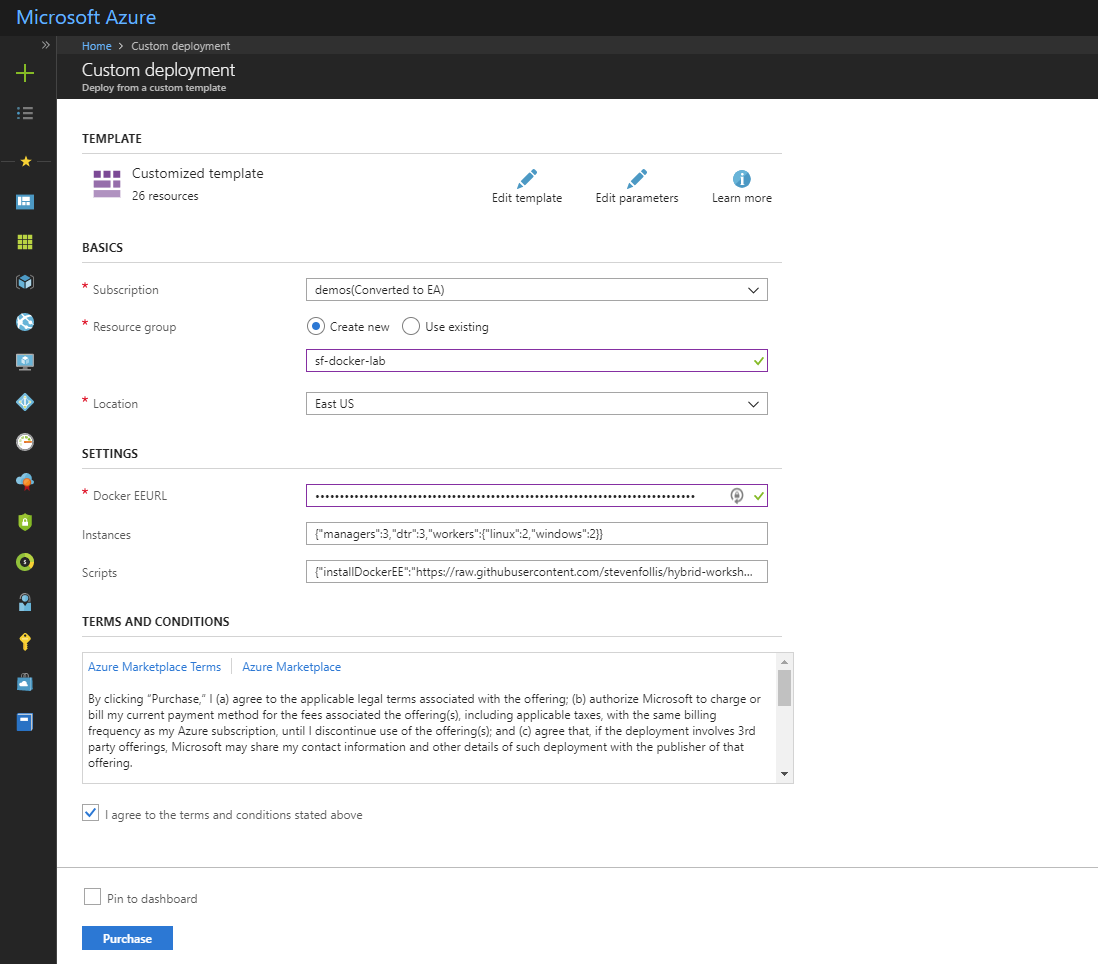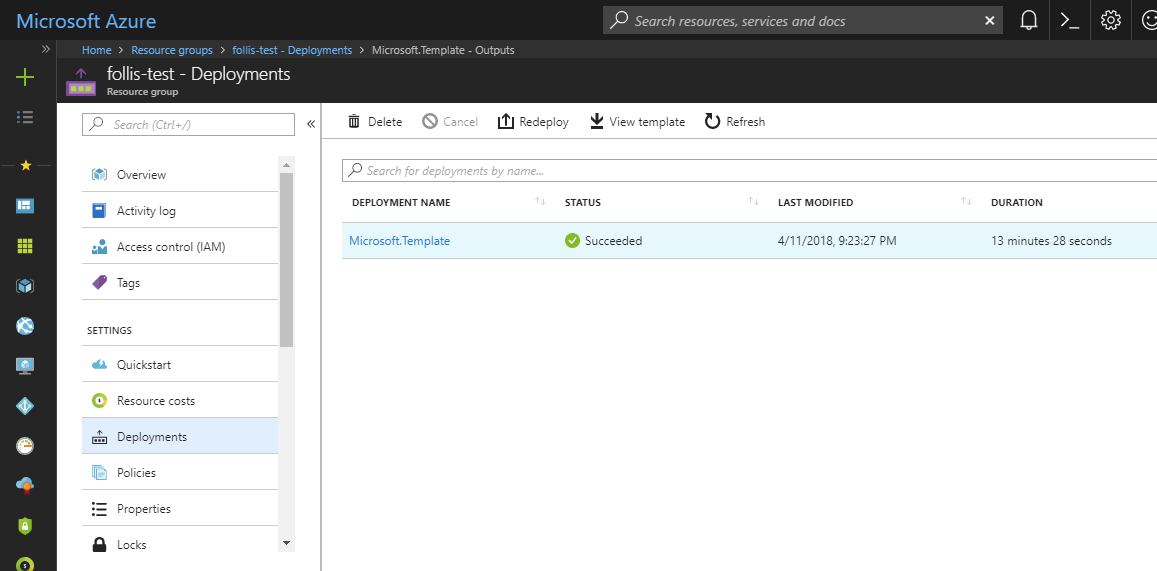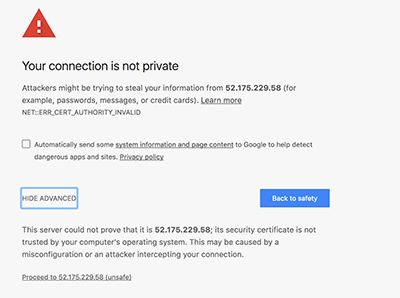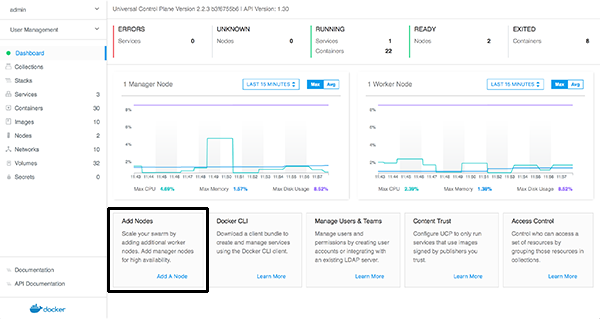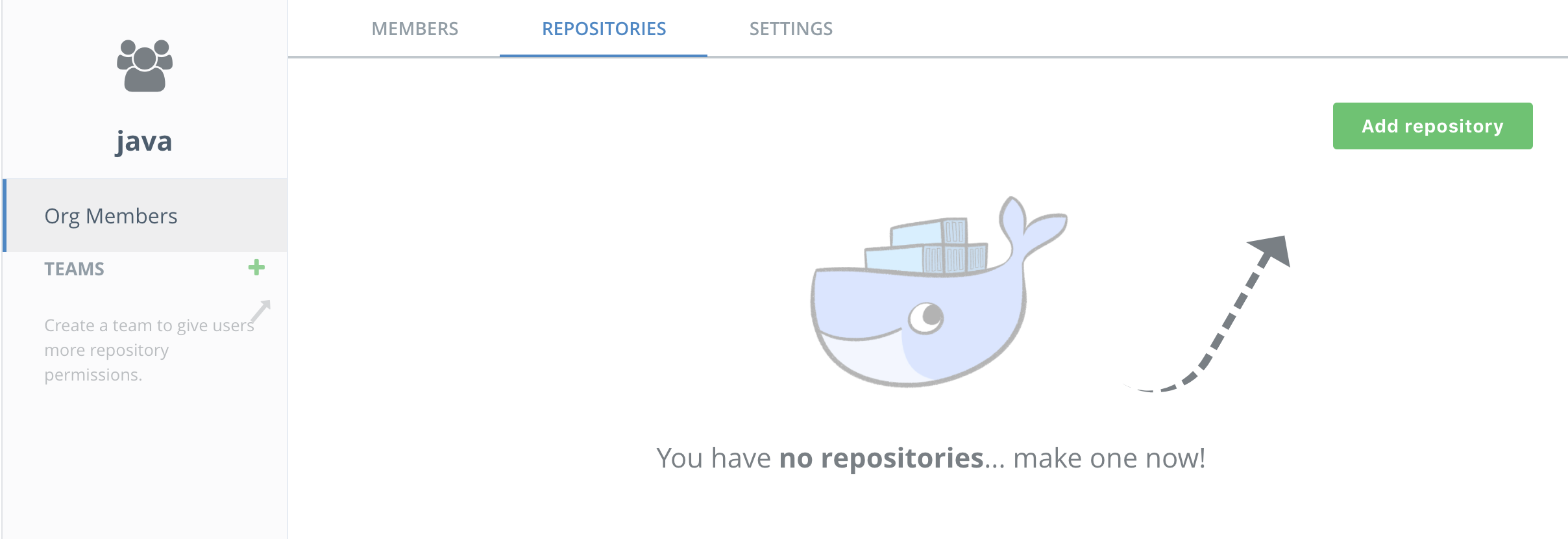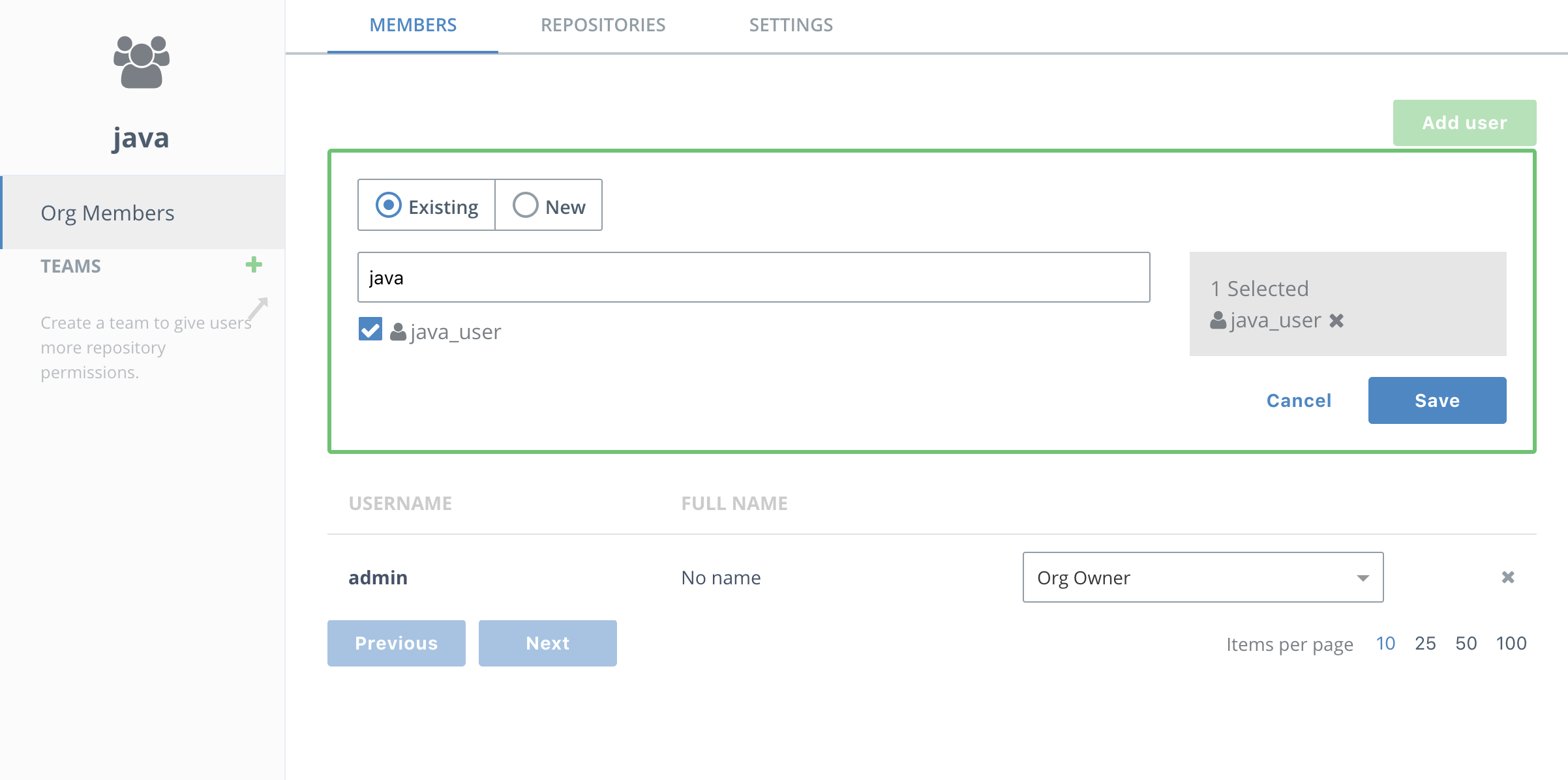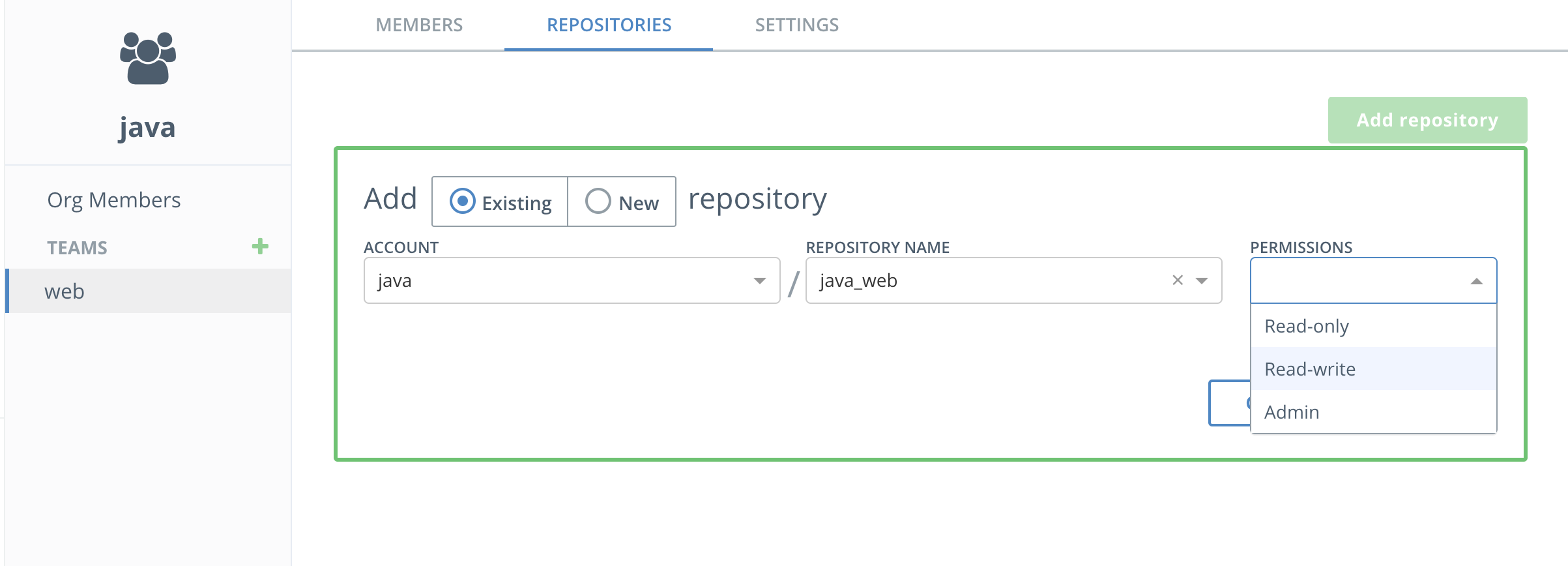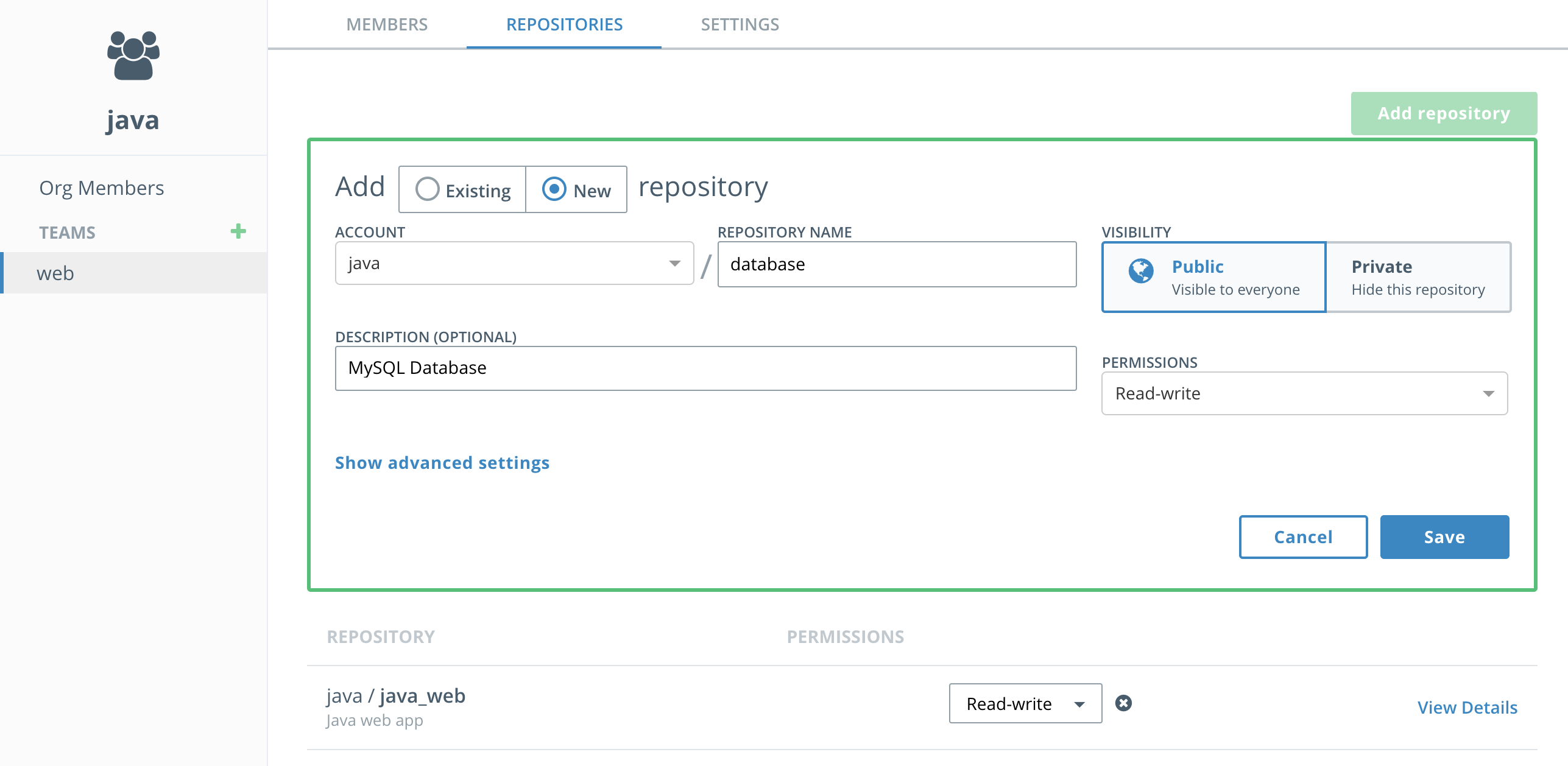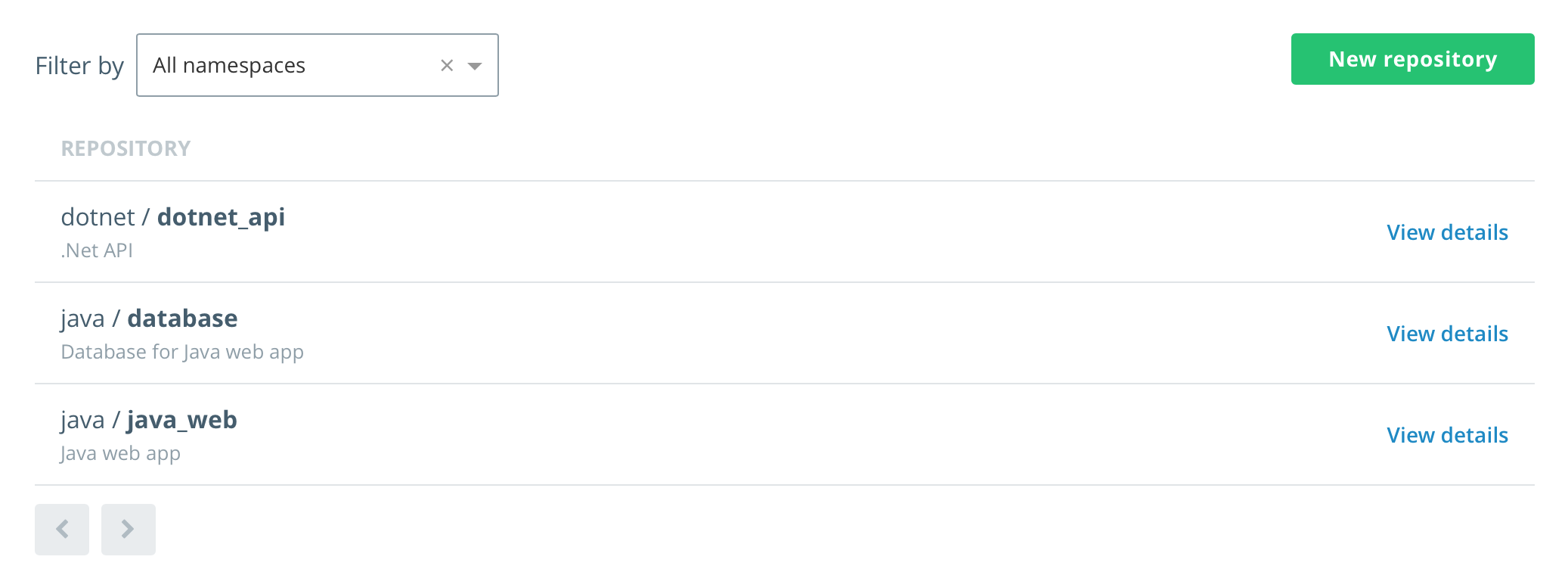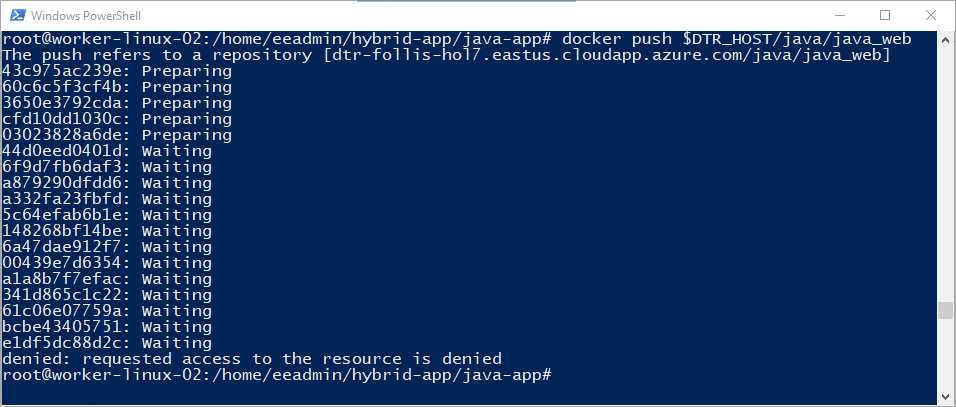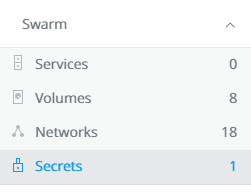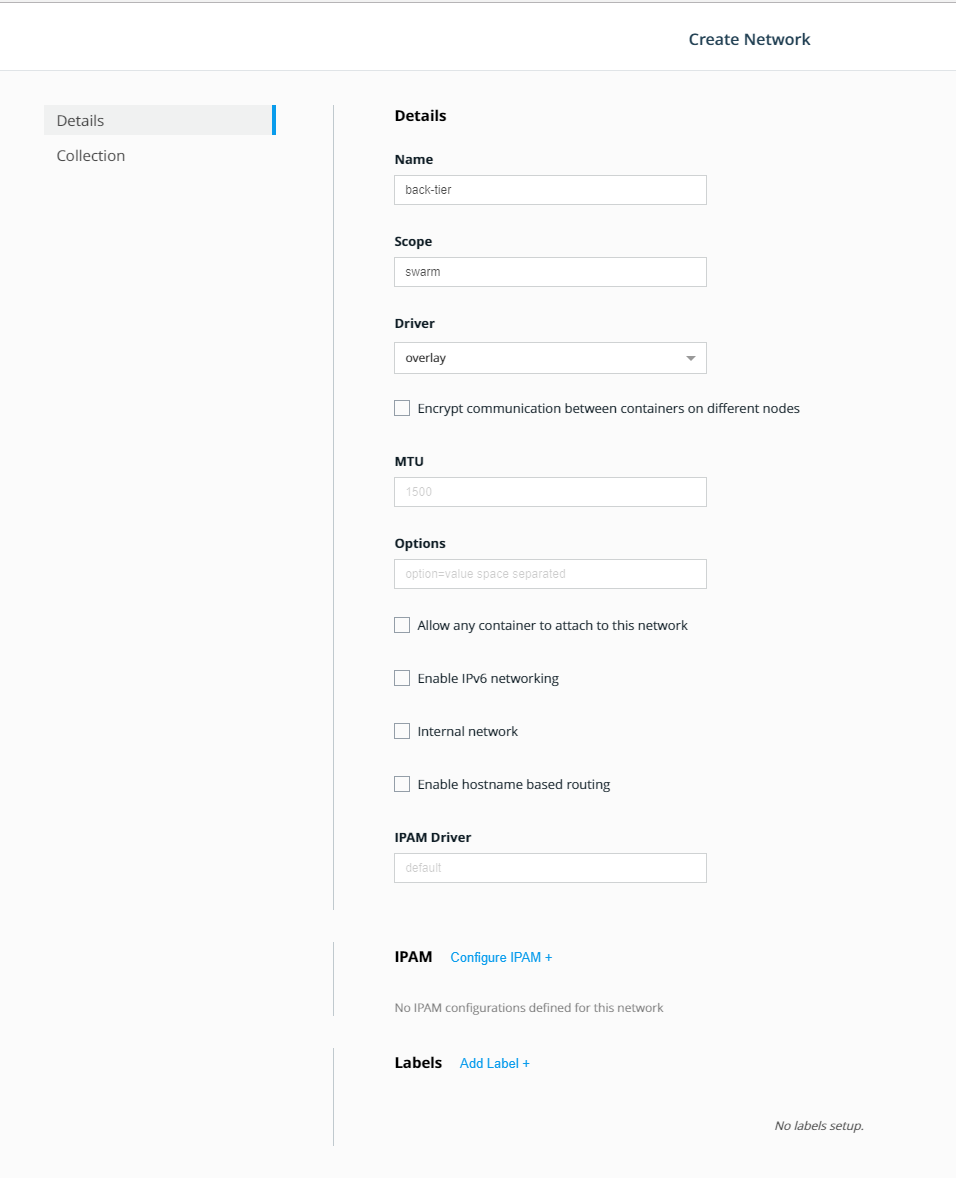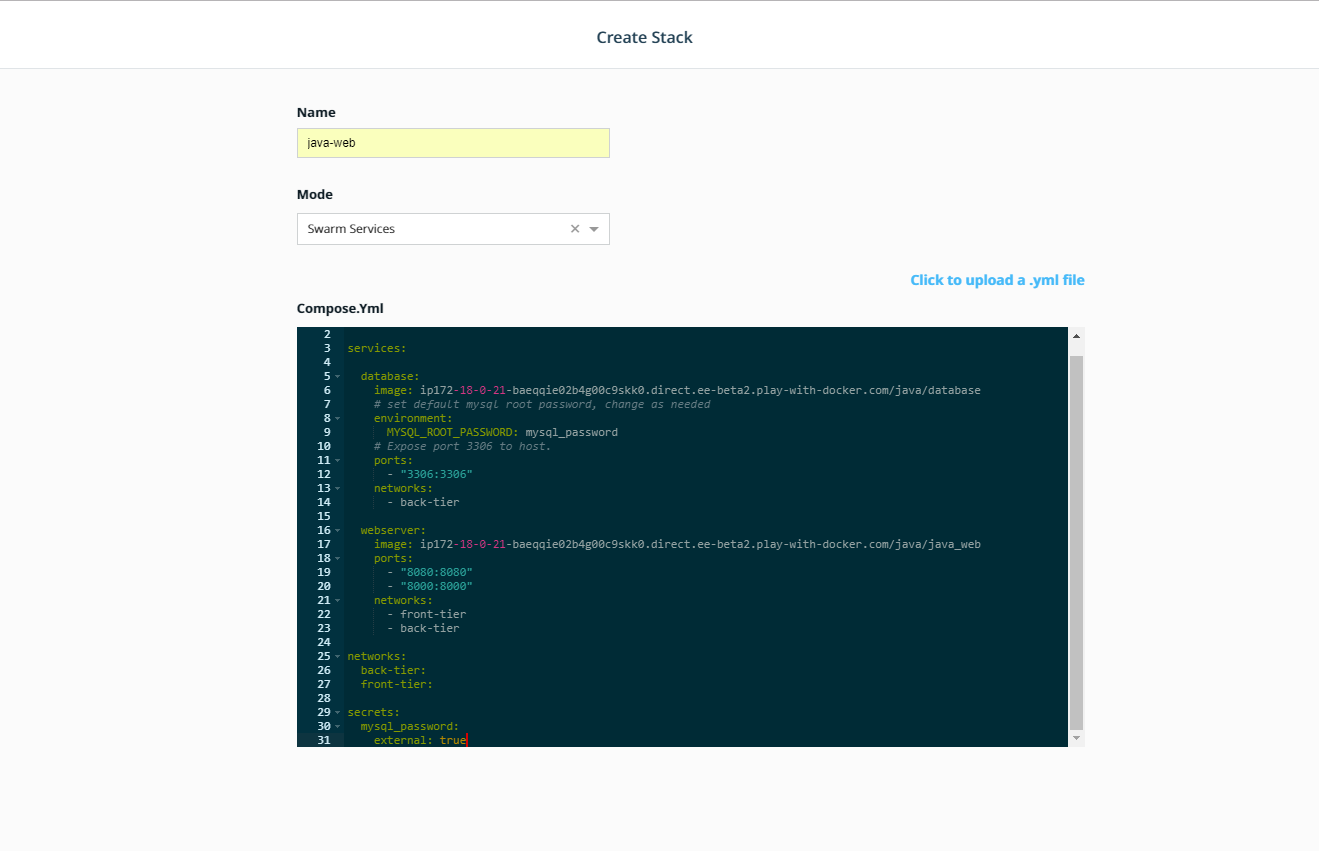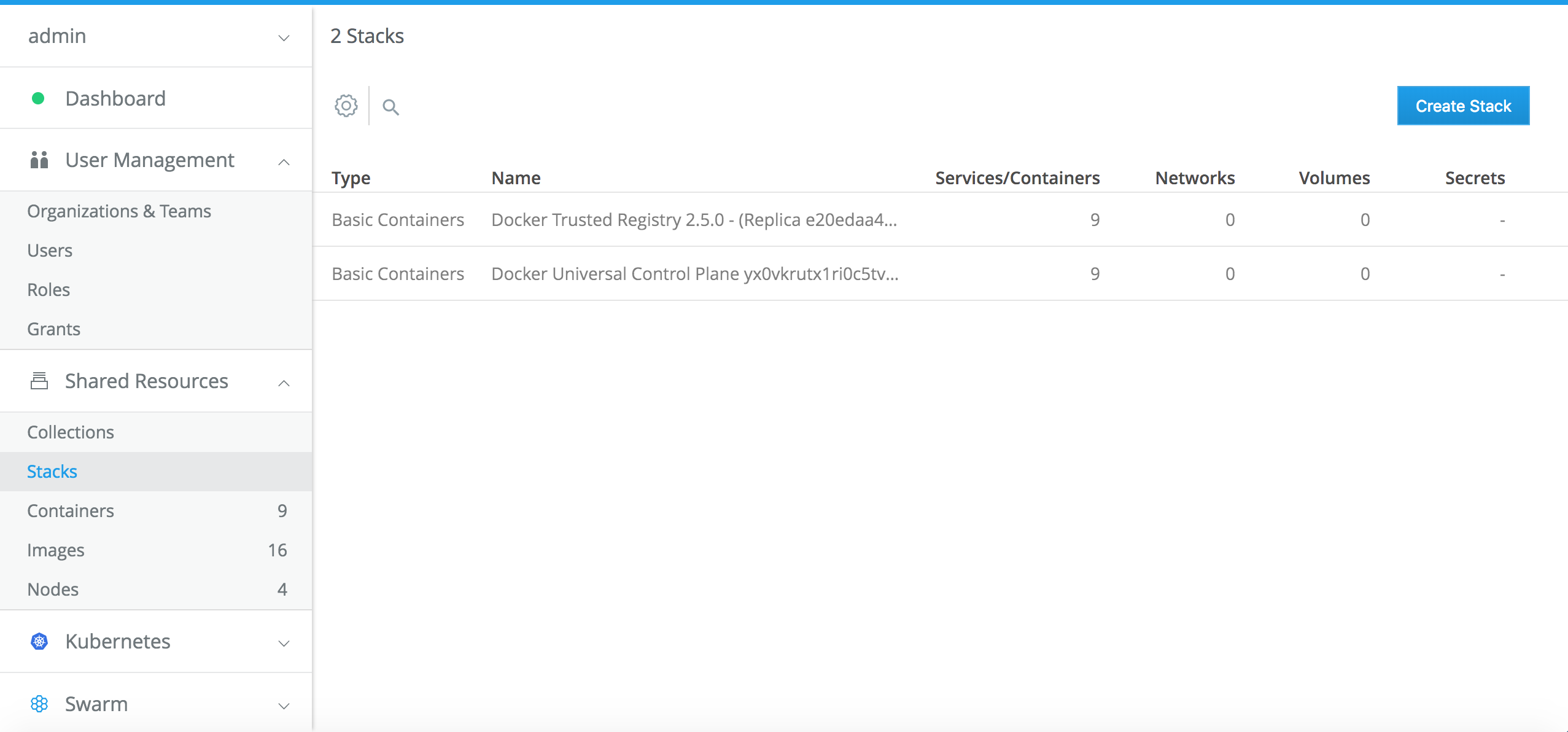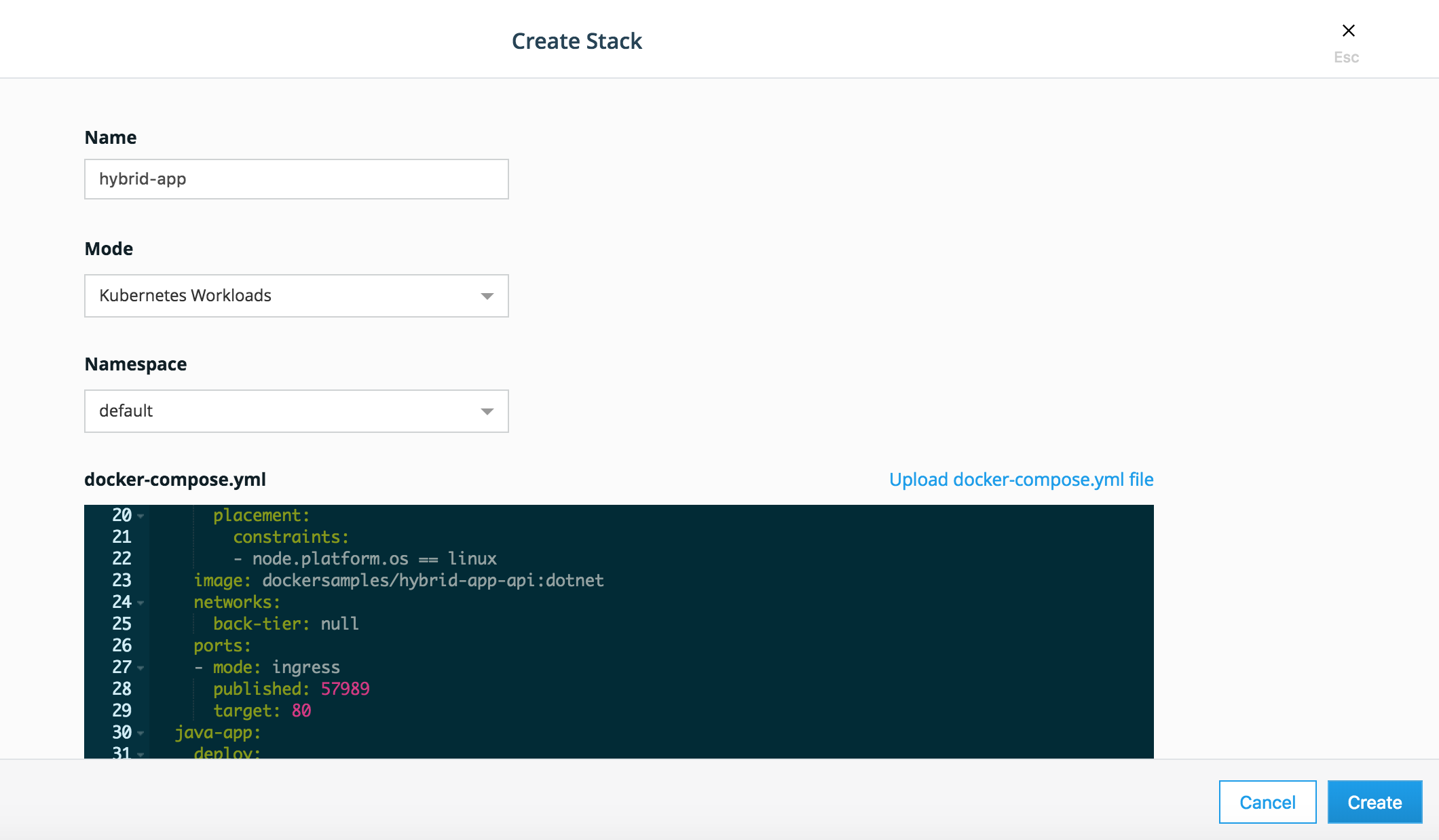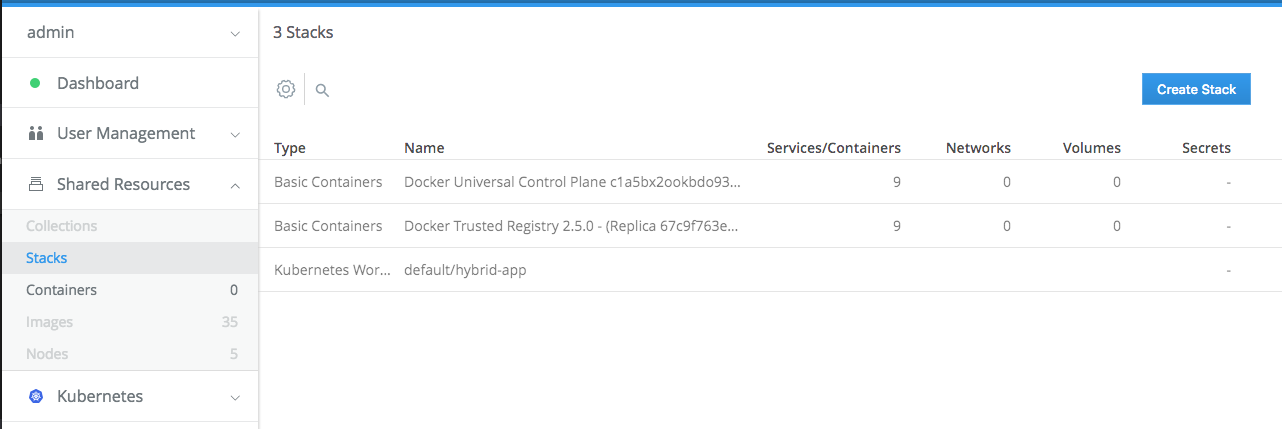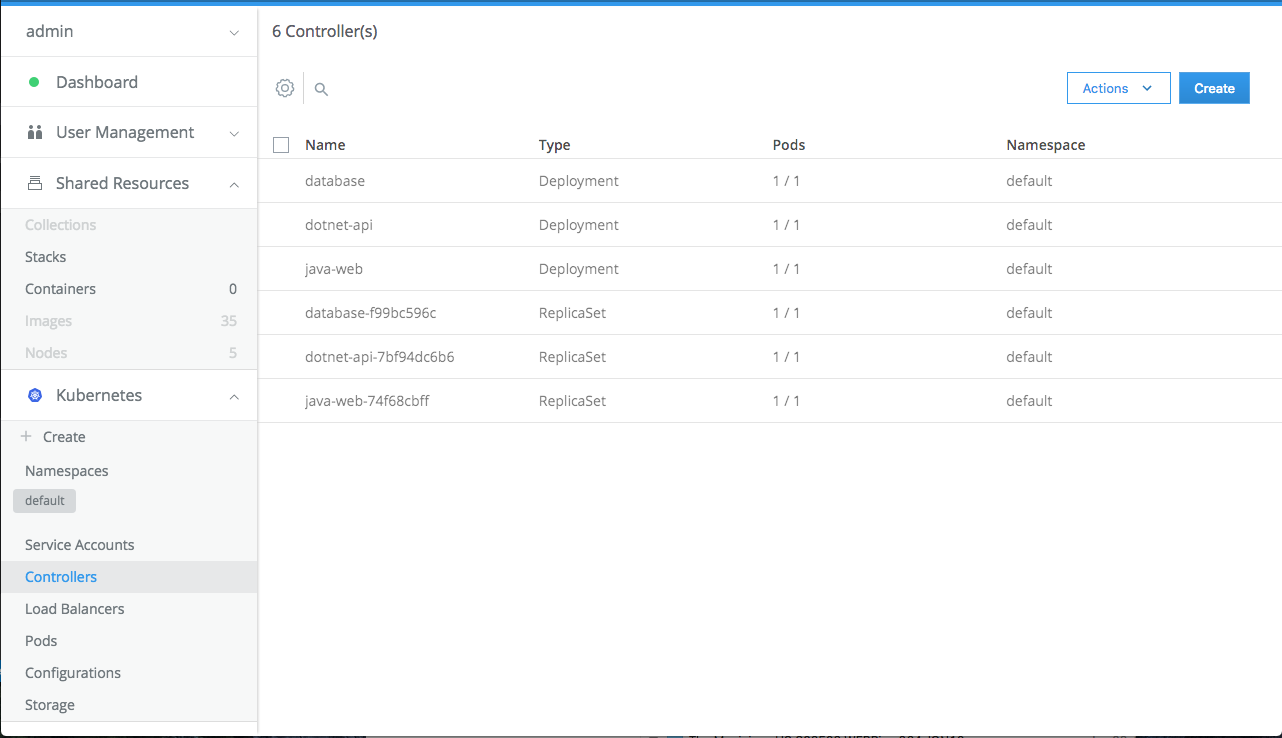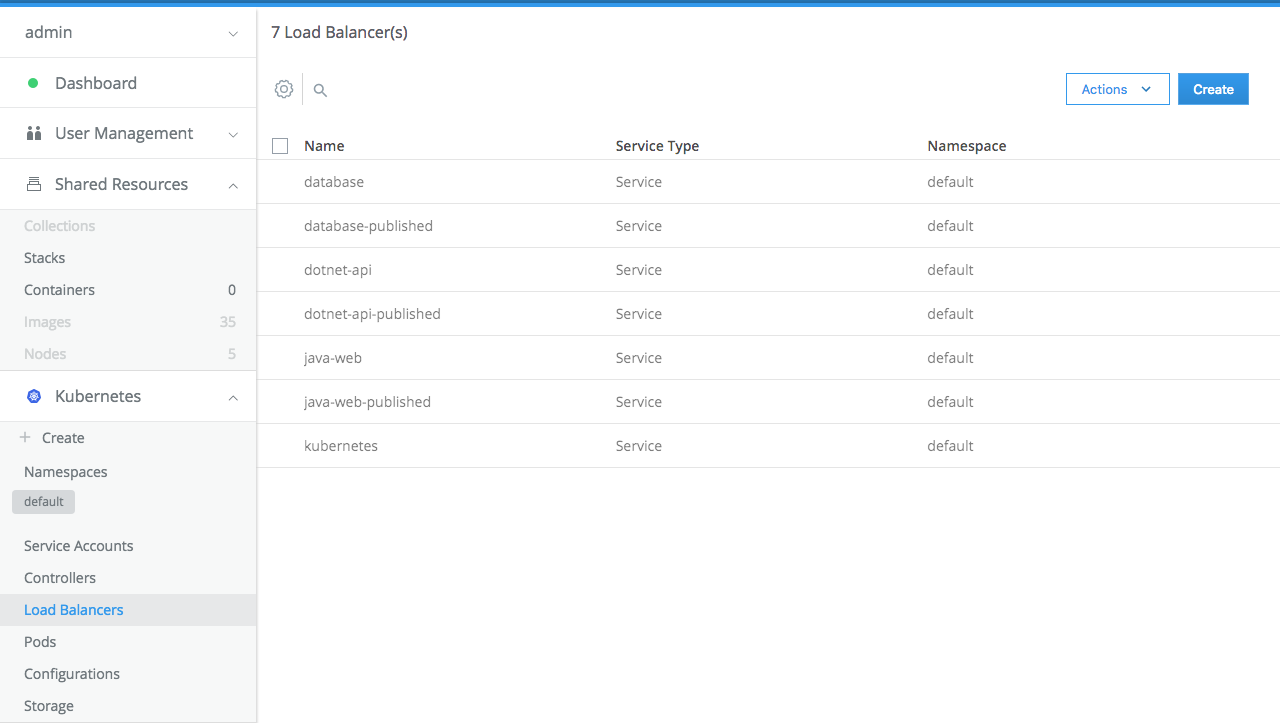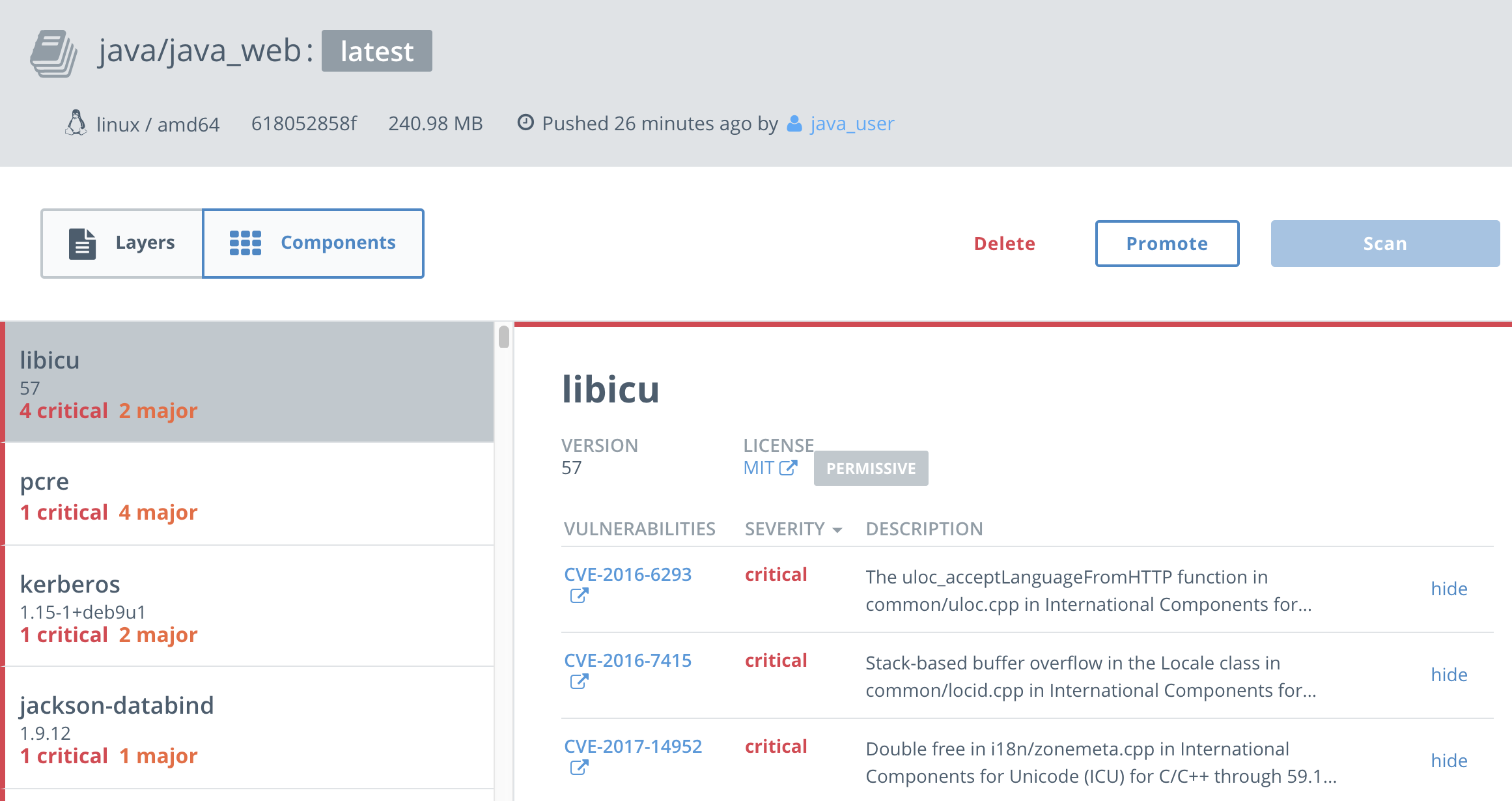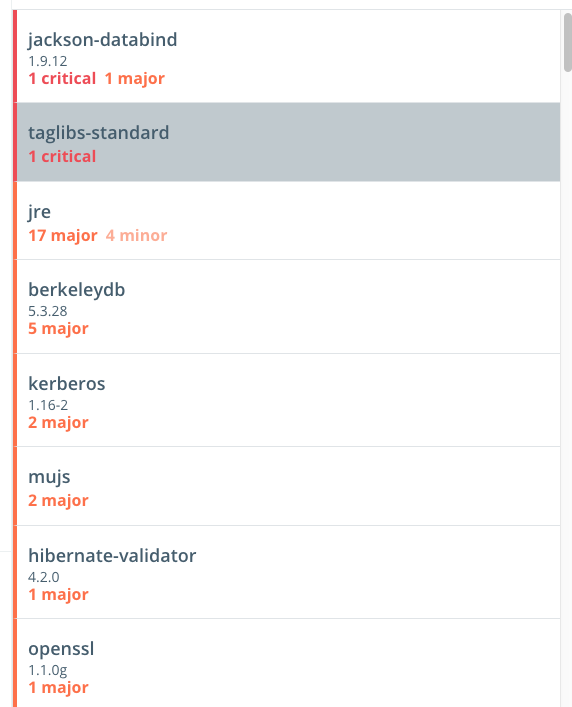Docker EE 2.0 is the first Containers-as-a-Service platform to offer production-level support for the integrated management and security of both Linux and Windows Server Containers. It is also the first platform to support both Docker Swarm and Kubernetes orchestration.
In this lab we'll use a Docker EE cluster comprised of Windows and Linux nodes. We'll deploy both a Java web app on Linux and a multi-service application that includes both Windows and Linux components using Docker Swarm. Then we'll take a look at securing and scaling the application. Finally, we will then deploy the app using Kubernetes.
This lab is built entirely on the capabilities and features of Microsoft Azure. Azure provides the infrastructure components necessary to build and maintain a production-grade Docker Enterprise Edition cluster. We will be using multiple Azure Services throughout this lab. Docker EE is also available on Azure Stack for on-premises and hybrid container scenarios.
Difficulty: Intermediate (assumes basic familiarity with Docker and Azure) If you're looking for a basic introduction to Docker, check out https://training.play-with-docker.com
Time: Approximately 75 minutes
Introduction:
Tasks:
-
When you encounter a phrase in between
<and>you are meant to substitute in a different value.For instance if you see
<dtr hostname>you would actually type something likedtr-gf-docker-lab52.eastus.cloudapp.azure.com -
When you see the Windows flag, you will complete all the subsequent instructions in a Windows Remote Desktop session
-
When you see Tux, the Linux penguin, you will complete the following instructions in a Linux SSH session
Docker EE provides an integrated, tested and certified platform for apps running on enterprise Linux or Windows operating systems and cloud providers. Docker EE is tightly integrated to the the underlying infrastructure to provide a native, easy to install experience and an optimized Docker environment. Docker Certified Infrastructure, Containers and Plugins are exclusively available for Docker EE with cooperative support from Docker and the Certified Technology Partner.
While it is easy to run an application in isolation on a single machine, orchestration allows you to coordinate multiple machines to manage an application, with features like replication, encryption, load-balancing, service discovery and more. If you have read about Docker, you have likely heard of Kubernetes and Docker swarm mode. Docker EE allows you to use either Docker swarm mode or Kubernetes for orchestration.
Both Docker swarm mode and Kubernetes are declarative: you declare your cluster's desired state, and applications you want to run and where, networks, and resources they can use. Docker EE simplifies this by taking common concepts and moving them to the a shared resource.
A Swarm is a group of machines that are running Docker and joined into a cluster. After that has happened, you continue to run the Docker commands you are used to, but now they are executed on a cluster by a Swarm manager. The machines in a Swarm can be physical or virtual. After joining a Swarm, they are referred to as nodes.
Swarm mode uses managers and workers to run your applications. Managers run the Swarm cluster, making sure nodes can communicate with each other, allocate applications to different nodes, and handle a variety of other tasks in the cluster. Workers are there to provide extra capacity to your applications. In this workshop, you have three managers and six workers.
Kubernetes is available in Docker EE 2.0 and included in this workshop. Kubernetes deployments tend to be more complex than Docker Swarm, and there are many component types. Docker Universal Control Plane (UCP) simplifies much of that complexity, relying on Docker Swarm to handle shared resources. We will concentrate on Pods and Load Balancers in this workshop, but there are numerous more components supported by UCP 2.0.
Before we can dive into deploying containers, we need to provision a Docker EE environment. This involves signing up for a Docker EE Trial License and provisioning the required Azure Infrastructure.
Let's first register for a Docker ID account, which we will use to generate a trial license.
-
Navigate in your web browser to the Docker Store.
-
In the to pright corner, click
Log In. On the Log In screen, selectCreate Accountand complete the new account process. -
Verify your email address by clicking the verification link in the email sent by Docker Store.
-
Login into the Docker Store, navigate to Docker Enterprise Edition Trial, and select
Start 1 Month Trial. -
Complete the form and click
Start your evaluation. You will be taken to the Setup Instructions screen.Note that URL at the bottom of the
Resourcescolumn; it is labeled "Copy and pase this URL to download your Edition" and is structured ashttps://storebits.docker.com/ee/trial/sub-00000000-0000-0000-0000-000000000000. This URL is your specific Docker EE Trial License Key and will be used when we provision Azure resources.Also under the
Resourcessection, clickLicense Keyto download adocker_subscription.licfile. This file is uploaded to a running Docker EE cluster to configure licensing requirements.
An Azure Resource Manager (ARM) Template is provided for this lab. The template provisions all necessary cloud infrastructure to a new Azure Resource Group.
-
Right-click the following blue
Deploy to Azurebutton and open the hyperlink in a new browser tab or window: -
The Azure Portal will open in the new tab. Sign in, and on the Custom Deployment configure the template deployment:
-
Select the subscription that you would like to use for this lab from the dropdown box
-
Create a new Resource Group, named in a way that is globally unique (we use this name as part of URLs). Your initials or a few random numbers should be sufficient. ex.
gf-docker-lab,docker-ee-421, orlab413. If you and a colleague(s) are completing this lab at the same time, ensure that you are not using duplicative names. -
In the
DockerEEURLbox, paste in the URL that you copied down from the Docker Store in the previous activity. This is the URL that looks likehttps://storebits.docker.com/ee/trial/sub-00000000-0000-0000-0000-000000000000and is used to automatically setup the cluster with your 30-Day Trial License.
-
-
With the form completed, check the box for
I agree to the terms and conditions stated aboveand click thePurchasebutton to begin the provisioning process.
The provisioning process often takes 20+ minutes to fully create and setup the entire Docker EE Cluster. In the interim, please feel free to take a short break, or begin watching the YouTube Video entitled Getting Started with Docker for Windows and .NET Apps.
-
When the template deployment is completed, navigate to your Azure Resource Group and on the left-hand side select
Deployments. -
Select the single deployment named
Microsoft.Template, and on the following blade selectOutputs. Make note of theUCP_URLandDTR_URL, as we will use these hyperlinks in future steps.NOTE: Keep this Azure Portal bale open in a separate browser tab for easy reference
The ARM Template deploys a variety of Azure resources, depicted by the follow architecture:
One of the key benefits of Docker EE is the ability to manage both Linux-based and Windows-based applications side-by-side on a single cluster. In the lab will be accessing using both types of Azure Virtual Machines, so let us test connectivity.
-
In the Azure Resource Group blade where the resources were provisioned, select the Virtual Machine named
worker-win-02. From the VM's blade, clickConnectto download a Windows Remote Desktop Connection File (.rdp).Note When navigating within an Azure Portal Resource Group blade that container numerous resources, toggle the
No groupingdropdown on the top-right control bar toGroup by type. It will be infinitely easier to locate particular resources.On your local machine, open the .rdp file and login using username
\eeadminand passwordDockerEE123!. Open a PowerShell window inside of the RDP connection and rundocker versionto ensure that the Docker Engine was properly installed.PowerShell should return the installed versions of the Docker Client and local Docker Engine and look similar to:
PS C:\Users\eeadmin> docker version Client: Version: 17.06.2-ee-8 API version: 1.30 Go version: go1.8.7 Git commit: 4e8ed51 Built: Fri Mar 30 01:37:46 2018 OS/Arch: windows/amd64 Server: Engine: Version: 17.06.2-ee-8 API version: 1.30 (minimum version 1.24) Go version: go1.8.7 Git commit: 4e8ed51 Built: Fri Mar 30 01:47:12 2018 OS/Arch: windows/amd64 Experimental: false PS C:\Users\eeadmin>
Note Remote Desktop is also available for Mac Users via the Apple Store
-
Back in the Azure Resource Group blade, select the virtual machine named
worker-linux-02. From the VM's blade, clickConnectto see the command for starting an SSH connection to the node. Examplessh eeadmin@13.92.152.49On your local machine, SSH into the VM. If you are running Windows 10 Fall Creator's Update or later you have SSH built into PowerShell and can run the
sshcommand directly in PowerShell. Otherwise, putty or the Windows Subsystem for Linux (WSL) can be used.Once you establish an SSH connection to the remote VM, run
sudo docker versionto ensure that the Docker Engine was properly installed. The terminal output should look nearly identical to the PowerShell in the previous step.Note if you get an error
Got permission denied while trying to connect to the Docker daemon socket at unix:///var/run/docker.sock: Get http://%2Fvar%2Frun%2Fdocker.sock/v1.30/version: dial unix /var/run/docker.sock: connect: permission deniedplease ensure you ran the command withsudoprepended
You have now accessed each type of VM used in today's lab.
The Azure environment is almost completely set up, but before we can begin the labs, we need to do two more steps. First we will add an additional Windows node to the cluster. We have left the node unjoined so you can see how easy it is to do. Then, will create two repositories in Docker Trusted Registry. (The Linux worker nodes are already added to the cluster)
The "Universal Control Plane" is a web-based interface for administering our container workloads across an entire cluster of virtual machine nodes. Next, we will use UCP to finalize our cluster configuration.
-
Navigate in your web browser to the UCP URL that you previously located in the Azure Portal. ex.
https://ucp-gf-docker-lab52.eastus.cloudapp.azure.comNote: Because this is a lab-based install of Docker EE we are using the default self-signed certificates. Because of this your browser may display a security warning. It is safe to click through this warning.
In a production environment you would use certificates from a trusted certificate authority and would not see this screen.
-
When prompted enter the username
eeadminand passwordDockerEE123!. The UCP web interface should load up in your web browser.
Let's start by adding our 2nd Windows Server 2016 worker node to the cluster.
-
You will be asked for a license key. Click
Upload Licenseand select thedocker_subscription.licfile that was downloaded from the Docker Store after signing up for the Trial License. -
From the main dashboard in UCP, click
Add a Nodeon the bottom left of the screen -
Select node type "
Windows" and check the box labeledI have followed the instructions and I'm ready to join my windows node.Copy the
docker swarm join...text from the dark box shown on theAdd Nodescreen. This command is used to join a node to a Docker EE cluster, and contains a secure token that is regularly rotated.Note: There is an icon in the upper right corner of the box that you can click to copy the text to your clipboard

Note: You may notice that there is a UI component to select
LinuxorWindowson theAdd Nodescreen. In a production environment where you are starting from scratch there are a few prerequisite steps to adding a Windows node. However, we've already done these steps in the ARM Template setup script.
-
We need to run the
docker swarm joincommand inside of a Window Server node to add it to the cluster. Open the Remote Desktop Connection to yourworker-win-02Windows Server VM from earlier. -
Paste the
docker swarm jointext from UCP into a command prompt or PowerShell window in the remote desktop connection.You should see the message
This node joined a swarm as a worker.indicating you've successfully joined the node to the cluster. -
Switch back to the UCP server in your web browser and click the
xin the upper right corner to close theAdd Nodewindow -
You should be taken to the
Nodesscreen and will see 3 nodes listed at the bottom of your screen.Initially the new worker node will be shown with status
down. After a minute or two, refresh your web browser to ensure that your Windows worker node has come up ashealthy
Congratulations on adding a Windows node to your UCP cluster. Next, we will create several repositories in Docker Trusted Registry.
Docker Trusted Registry is a special server designed to store and manage your Docker images. In this lab we're going to create three different Docker images, and push them to DTR. But before we can do that, we need to setup repositories in which those images will reside. Often that would be enough.
However, before we create the repositories, we do want to restrict access to them. Since we have two distinct app components, a Java web app (with a database), and a .NET API, we want to restrict access to them to the team that develops them, as well as the administrators. To do that, we need to create two users and then two organizations.
-
Open DTR from the URL located in the Ouputs section of the Azure Portal's Template Deployment blade that we located earlier, ex.
https://dtr-gf-docker-lab.eastus.cloudapp.azure.comNote: As with UCP before, DTR is also using self-signed certs. It's safe to click through any browser warning you might encounter.
-
From the main DTR page, click Users on the left-hand nav, and then the click the green New user button in the top-right corner of the screen.
-
Create a new user,
java_userand give it a password you'll remember. I useduser1234. Be sure to save the user.Then do the same for a
dotnet_user. -
Select Organizations from the left-hand navigation menu
-
Create a new organization by clicking the
New organizationbutton. Name itjava, and click Save*.Then do the same with
dotnetand you will have two organizations. -
Now you get to add a repository! Click on the java organization, select Repositories and then New repository
-
Name the repository
java_web.Note the repository is listed as "Public" but that means it is publicly viewable by users of DTR. It is not available to the general public.
-
Now it's time to create a team so you can restrict access to who administers the images. Select the Members tab of the java organization and the members will show up. Press Add user and start typing in java. Select the
java_userwhen it comes up. -
Next select the
javaorganization and press theTeambutton to create awebteam. -
Add the
java_useruser to thewebteam and click save. -
Next select the
webteam and select theRepositoriestab. SelectAdd Existing repositoryand choose thejava_webrepository. You'll see thejavaaccount is already selected. Then selectRead/Writepermissions so thewebteam has permissions to push images to this repository. Finally clickSave. -
Now add a new repository also owned by the web team and call it
database. This can be done directly from the web team'sRepositoriestab by selecting the radio button for AddNewRepository. Be sure to grantRead/Writepermissions for this repository to thewebteam as well. -
Repeat 4-11 above to create a
dotnetorganization with a repository calleddotnet_api, thedotnet_user, and a team namedapi(withdotnet_useras a member). Grantread/writepermissions for thedotnet_apirepository to theapiteam. -
From the main DTR page, click Repositories, you will now see all three repositories listed.
-
(optional) If you want to check out security scanning in Task 5, you should turn on scanning now so DTR downloads the database of security vulnerabilities. In the left-hand panel, select
Systemand then theSecuritytab. SelectENABLE SCANNINGandOnline.
Congratulations, you have created three new repositories in two new organizations, each with one team and a user each.
Now that we've completely configured our cluster, let's deploy a couple of web apps. These are simple web pages that allow you to send a tweet. One is built on Linux using NGINX and the other is build on Windows Server 2016 using IIS.
Let's start with the Linux version.
-
In a terminal window, re-establish the earlier SSH connection to the
worker-linux-02Azure VM that we tested earlier. -
Before continuing, let us configure an environment variable for the DTR URL/DTR hostname. Navigate to the Azure Portal's template deployment output blade. Select and copy the the URL for the DTR hostname.
-
Set an environment variable
DTR_HOSTusing the DTR host name defined on your ARM Template outputs page:Note: use a FQDN without a
httpprefix, ex.dtr-sf-lab8.eastus.cloudapp.azure.com$ export DTR_HOST=<dtr hostname> $ echo $DTR_HOST
-
Now use git to clone the workshop repository.
$ git clone https://github.com/dockersamples/hybrid-app.git
You should see something like this as the output:
Cloning into 'hybrid-app'... remote: Counting objects: 389, done. remote: Compressing objects: 100% (17/17), done. remote: Total 389 (delta 4), reused 16 (delta 1), pack-reused 363 Receiving objects: 100% (389/389), 13.74 MiB | 3.16 MiB/s, done. Resolving deltas: 100% (124/124), done. Checking connectivity... done.
You now have the necessary demo code on your worker host.
-
Change into the
java-appdirectory.$ cd ./hybrid-app/java-app/ -
Use
docker buildto build your Docker image.$ docker build -t $DTR_HOST/java/java_web .
Note: if you see a permissions error, run
sudo suto elevate your terminal account before running commandsThe
-ttags the image with a name. In our case, the name indicates which DTR server and under which organization's respository the image will live.Note: Feel free to examine the Dockerfile in this directory if you'd like to see how the image is being built. Run
cat Dockerfileor open the file in GitHub via a web browser.There will be quite a bit of output. The Dockerfile describes a two-stage build. In the first stage, a Maven base image is used to build the Java app. But to run the app you don't need Maven or any of the JDK stuff that comes with it. The second stage takes the output of the first stage and puts it into a much smaller Tomcat image.
-
Log into your DTR server from the command line.
First use the
dotnet_user, which isn't part of the java organization$ docker login $DTR_HOST Username: <your dotnet_user username> Password: <your dotnet_user password> Login Succeeded
Use
docker pushto upload your image up to Docker Trusted Registry.$ docker push $DTR_HOST/java/java_webAs you can see, the access control that you established in the Task 1.3 prevented you from pushing to this repository. The user
dotnet_userdoes not have permissions to use the<your DTR>/java/java_webrepository. -
Now try logging in using
java_user, and then usedocker pushto upload your image up to Docker Trusted Registry.$ docker login $DTR_HOST Username: <your java_user username> Password: <your java_user password> $ docker push $DTR_HOST/java/java_web
The output should be similar to the following:
The push refers to a repository [<dtr hostname>/java/java_web] feecabd76a78: Pushed 3c749ee6d1f5: Pushed af5bd3938f60: Pushed 29f11c413898: Pushed eb78099fbf7f: Pushed latest: digest: sha256:9a376fd268d24007dd35bedc709b688f373f4e07af8b44dba5f1f009a7d70067 size: 1363
Success! Because you are using a user name that belongs to the right team in the right organization, you can push your image to DTR.
-
In your web browser head back to your DTR server and click
View Detailsnext to yourjava_webrepo to see the details of the repo.Note: If you've closed the tab with your DTR server, copy and paste the DTR URL from the Azure Portal output blade into a new web browser tab
-
Click on
Imagesfrom the horizontal menu. Notice that your newly pushed image is now on your DTR. -
Next, build the MySQL database image. In the SSH session, change into the database directory.
$ cd ../database -
Use
docker buildto build your Docker image.$ docker build -t $DTR_HOST/java/database .
-
Use
docker pushto upload your image up to Docker Trusted Registry.$ docker push $DTR_HOST/java/database -
In your web browser head back to your DTR server and click
View Detailsnext to yourdatabaserepo to see the details of the repo. -
Click on
Imagesfrom the horizontal menu. Notice that your newly pushed image is now on your DTR.
The next step is to run the app in Swarm. As a reminder, the application has two components, the web front-end and the database. In order to connect to the database, the application needs a password. If you were just running this in development you could easily pass the password around as a text file or an environment variable. But in production you would never do that. So instead, we're going to create an encrypted secret. That way access can be strictly controlled.
-
Open UCP by copying and pasting the UCP URL hyperlink from the Azure Portal outputs blade. You should see the Universal Control Panel dashboard.
-
There's a lot here about managing the cluster. You can take a moment to explore around. When you're ready, click on
Swarmand selectSecrets. -
You'll see a
Create Secretscreen. Typemysql_passwordinNameandDockercon!!!inContent. Then clickCreatein the lower left. Obviously you wouldn't use this password in a real production environment. You'll see the content box allows for quite a bit of content, you can actually create structured content here that will be encrypted with the secret. -
Next we're going to create two networks. First click on
NetworksunderSwarmin the left panel, and selectCreate Networkin the upper right. You'll see aCreate Networkscreen. Name your first networkback-tier. Leave everything else the default. -
Repeat step 4 but with a new network
front-tier. -
Now we're going to use the fast way to create your application:
Stacks. In the left panel, clickShared Resources,Stacksand thenCreate Stackin the upper right corner. -
Name your stack
java_weband selectSwarm Servicesfor yourMode. Below you'll see we've included a.ymlfile. Before you paste that in to theCompose.ymledit box, note that you'll need to make a quick change. Each of the images is defined as<dtr hostname>/java/<something>. You'll need to change the<dtr hostname>to the DTR Hostname found on the Azure Portal outputs blade for your environment. It will look something like this:dtr-gf-docker-lab52.eastus.cloudapp.azure.com/java/databaseYou can do that right in the edit box inUCPbut wanted to make sure you saw that first.Here's the
Composefile. Once you've copy and pasted it in, and made the changes, clickCreatein the lower right corner.version: "3.3" services: database: image: <dtr hostname>/java/database # set default mysql root password, change as needed environment: MYSQL_ROOT_PASSWORD: mysql_password # Expose port 3306 to host. ports: - "3306:3306" networks: - back-tier webserver: image: <dtr hostname>/java/java_web ports: - "8080:8080" networks: - front-tier - back-tier networks: back-tier: front-tier: external: true secrets: mysql_password: external: true
After the Stack finishes creating, click the Done button in the lower right.
-
Click on
Stacksagain, and select thejava_webstack. Click onInspect Resourcesand then selectServices. Selectjava_web_webserver. In the right panel, you'll seePublished Endpoints. Select the one with:8080at the end. You'll see aApache Tomcat/7.0.84landing page. Add/java-webto the end of the URL and you'll see the app. -
Delete the
java_webstack.
Now that we've moved the app and updated it, we're going to add in a user sign-in API. For fun, and to show off the cross-platform capabilities of Docker EE, we are going to do it in a Windows container with a .NET Framework application.
-
Because this is a Windows container, we have to build it on a Windows host. Open the Remote Desktop Connection to
worker-win-02from earlier. -
Open PowerShell, change directory to
C:\and clone the repository again onto this host:PS C:\User\eeadmin> cd c:\ PS C:\> git clone https://github.com/dockersamples/hybrid-app.git
-
Set an environment variable for the DTR host name. Much like you did for the Java app, this will make a few step easier. Copy the DTR host name again and create the environment variable. For instance, if your DTR host was
dtr-gf-docker-lab52.eastus.cloudapp.azure.comyou would type:PS C:\> $env:DTR_HOST="dtr-gf-docker-lab52.eastus.cloudapp.azure.com"
-
CD into the
c:\hybrid-app\netfx-apidirectory.Note you'll see a
dotnet-apidirectory as well. Do not use that directory. That's a .NET Core api that runs on Linux. We'll use that later in the Kubernetes section.PS C:\> cd c:\hybrid-app\netfx-api\
-
Use
docker buildto build your Windows image.PS C:\hybrid-app\netfx-api> docker build -t $env:DTR_HOST/dotnet/dotnet_api .
Note: Feel free to examine the Dockerfile in this directory if you'd like to see how the image is being built.
Your output should be similar to what is shown below
PS C:\hybrid-app\netfx-api> docker build -t $env:DTR_HOST/dotnet/dotnet_api . Sending build context to Docker daemon 415.7kB Step 1/8 : FROM microsoft/iis:windowsservercore-10.0.14393.1715 ---> 590c0c2590e4 <output snipped> Removing intermediate container ab4dfee81c7e Successfully built d74eead7f408 Successfully tagged <dtr hostname>/dotnet/dotnet_api:latest
Note: It will take a few minutes for your image to build.
-
Log into Docker Trusted Registry
PS C:\hybrid-app\netfx-api> docker login $env:DTR_HOST Username: dotnet_user Password: user1234 Login Succeeded
-
Push your new image up to Docker Trusted Registry.
PS C:\hybrid-app\netfx-api> docker push $env:DTR_HOST/dotnet/dotnet_api The push refers to a repository [<dtr hostname>/dotnet/dotnet_api] 5d08bc106d91: Pushed 74b0331584ac: Pushed e95704c2f7ac: Pushed 669bd07a2ae7: Pushed d9e5b60d8a47: Pushed 8981bfcdaa9c: Pushed 25bdce4d7407: Pushed df83d4285da0: Pushed 853ea7cd76fb: Pushed 55cc5c7b4783: Skipped foreign layer f358be10862c: Skipped foreign layer latest: digest: sha256:e28b556b138e3d407d75122611710d5f53f3df2d2ad4a134dcf7782eb381fa3f size: 2825
-
You may check your repositories in the DTR web interface to see the newly pushed image.
-
First we need to update the Java web app so it'll take advantage of the .NET API. Switch back to
worker-linux-02and change directories to thejava-app-v2directory. Repeat steps 1,2, and 4 from Task 2.2 but add a tag:2to your build and pushes:$ cd ../java-app-v2 $ docker build -t $DTR_HOST/java/java_web:2 . $ docker push $DTR_HOST/java/java_web:2
This will push a different version of the app, version 2, to the same
java_webrepository. -
Next repeat the steps 6-8 from Task 2.3, but use this
Composefile instead:version: "3.3" services: database: image: <dtr hostname>/java/database # set default mysql root password, change as needed environment: MYSQL_ROOT_PASSWORD: mysql_password # Expose port 3306 to host. ports: - "3306:3306" networks: - back-tier webserver: image: <dtr hostname>/java/java_web:2 ports: - "8080:8080" networks: - front-tier - back-tier environment: BASEURI: http://dotnet-api/api/users dotnet-api: image: <dtr hostname>/dotnet/dotnet_api ports: - "57989:80" networks: - front-tier - back-tier networks: back-tier: front-tier: external: true secrets: mysql_password: external: true
-
Once tested, delete the stack.
Now that we have built, deployed and scaled a multi OS application to Docker EE using Swarm mode for orchestration, let's learn how to use Docker EE with Kubernetes.
Docker EE lets you choose the orchestrator to use to deploy and manage your application, between Swarm and Kubernetes. In the previous tasks we have used Swarm for orchestration. In this section we will deploy the application to Kubernetes and see how Docker EE exposes Kubernetes concepts.
For now Kubernetes does not support Windows workloads in production, so we will start by porting the .NET part of our application to a Linux container using .NET Core.
-
In your SSH connection to
worker-linux-02, CD into thehybrid-app/dotnet-apidirectory.$ cd ~/hybrid-app/dotnet-api/
-
Use
docker buildto build your Linux image.$ docker build -t $DTR_HOST/dotnet/dotnet_api:core .
Note: Feel free to examine the Dockerfile in this directory if you'd like to see how the image is being built. Also, we used the
:coretag so that the repository has two versions, the original with a Windows base image, and this one with a Linux .NET Core base image.Your output should be similar to what is shown below
Sending build context to Docker daemon 29.7kB Step 1/10 : FROM microsoft/aspnetcore-build:2.0.3-2.1.2 AS builder 2.0.3-2.1.2: Pulling from microsoft/aspnetcore-build 723254a2c089: Pull complete <output snipped> Removing intermediate container 508751aacb5c Step 7/10 : FROM microsoft/aspnetcore:2.0.3-stretch 2.0.3-stretch: Pulling from microsoft/aspnetcore Successfully built fcbc49ef89bf Successfully tagged ip172-18-0-8-baju0rgm5emg0096odmg.direct.ee-beta2.play-with-docker.com/dotnet/dotnet_api:latest
Note: It will take a few minutes for your image to build.
-
Log into Docker Trusted Registry
$ docker login $DTR_HOST Username: dotnet_user Password: user1234 Login Succeeded -
Push your new image up to Docker Trusted Registry.
$ docker push $DTR_HOST/dotnet/dotnet_api:core The push refers to a repository [<dtr hostname>/dotnet/dotnet_api] 5d08bc106d91: Pushed 74b0331584ac: Pushed e95704c2f7ac: Pushed 669bd07a2ae7: Pushed d9e5b60d8a47: Pushed 8981bfcdaa9c: Pushed 25bdce4d7407: Pushed df83d4285da0: Pushed 853ea7cd76fb: Pushed 55cc5c7b4783: Skipped foreign layer f358be10862c: Skipped foreign layer latest: digest: sha256:e28b556b138e3d407d75122611710d5f53f3df2d2ad4a134dcf7782eb381fa3f size: 2825
-
You may check your repositories in the DTR web interface to see the newly pushed image.
Docker EE lets you deploy native Kubernetes applications using Kubernetes deployment descriptors, by pasting the yaml files in the UI, or using the kubectl CLI tool.
However many developers use docker-compose to build and test their application, and having to create Kubernetes deployment descriptors as well as maintaining them in sync with the Docker Compose file is tedious and error prone.
In order to make life easier for developers and operations, Docker EE lets you deploy an application defined with a Docker Compose file as a Kubernetes workloads. Internally Docker EE uses the official Kubernetes extension mechanism by defining a Custom Resource Definition (CRD) defining a stack object. When you post a Docker Compose stack definition to Kubernetes in Docker EE, the CRD controller takes the stack definition and translates it to Kubernetes native resources like pods, controllers and services.
We'll use a Docker Compose file to instantiate our application, and it's the same file as before, except that we will switch the .NET Docker Windows image with the .NET Core Docker Linux image we just built.
Let's look at the Docker Compose file in app/docker-stack.yml.
Change the images for the dotnet-api and java-app services for the ones we just built. And remember to change <dtr hostname> to the long DTR hostname listed on the Azure Portal template deployment output blade for your environment.
version: '3.3'
services:
database:
deploy:
placement:
constraints:
- node.platform.os == linux
image: <dtr hostname>/java/database
environment:
MYSQL_ROOT_PASSWORD: mysql_password
networks:
back-tier:
ports:
- published: 3306
target: 3306
dotnet-api:
deploy:
placement:
constraints:
- node.platform.os == linux
image: <dtr hostname>/dotnet/dotnet_api:core
networks:
back-tier:
ports:
- published: 57989
target: 80
java-web:
deploy:
placement:
constraints:
- node.platform.os == linux
image: <dtr hostname>/java/java_web:2
environment:
BASEURI: http://dotnet-api/api/users
networks:
back-tier:
front-tier:
ports:
- published: 8080
target: 8080
networks:
back-tier:
front-tier:
external: true
secrets:
mysql_password:
external: trueLogin to UCP, go to Shared resources, Stacks.
Click create Stack. Fill name: hybrid-app, mode: Kubernetes Workloads, namespace: default.
You should see the stack being created.
Click on it to see the details.
Go to Kubernetes / Pod. See the pods being deployed.
Go to Kubernetes / Controllers. See the deployments and ReplicaSets.
Go to Kubernetes / Load Balancers. See the Kubernetes services that have been created.
Click on java-web-published to the the details of the public load balancer created for the Java application.
There will be a link for the public url where the service on port 8080 is exposed. Click on that link, add /java-web/ at the end of the url. You should be led to the running application.
If the port in the URL is not
8080, for example33871, then the Azure Load Balancer namedappsneeds to be re-configured. Create a probe and load balancer rule for the given port to allow traffic into the cluster on the designated port.
Security is crucial for all organizations. And it is a complicated topic, too indepth to go through in detail here. We're going to look at just one of the features that Docker EE has to help you build a secure software supply chain: Security Scanning.
-
If you turned on security in Task 1.3 step 14 you can skip this step. Otherwise, turn on scanning now so DTR downloads the database of security vulnerabilities. In the left-hand panel, select
Systemand then theSecuritytab. SelectENABLE SCANNINGandOnline.This will take awhile so you may want to take a break by reading up on Docker Security.
-
Once the scanning database has downloaded, you can scan individual images. Select a repository, such as
java/java_web, and then select theImagestab. If it hasn't already scanned, selectStart scan. If it hasn't scanned already, this can take 5-10 minutes or so.You see that in fact there are alot of vulnerabilities! That's because we deliberately chose an old version of the
tomcatbase image. Also, most operating systems and many libraries contain some vulnerabilities. The details of these vulnerabilites and when they come into play are important. You can selectView detailsto get more information. You can see which layers of your image introduced vulnerabilities.And by selecting
Componentsyou can see what the vulnerabilities are and what components introduced the vulnerabilies. You can also select the vulnerabilies and examine them in the Common Vulnerabilies and Exploits database. -
One way you can reduce your vulnerabilities is to choose newer images. For instance, you can go back to the Dockerfile in the
~/hybrid-app/java-appdirectory, and change the second base image totomcat:9.0.6-jre-9-slim. Slim images in official images are generally based on lighter-weight operating systems likeAlpine LinuxorDebian, which have reduced attack space. You can change the Dockerfile usingvimoremacs.Then check the scanning again (this may again take 5-10 minutes).
You'll still see vulnerabilites, but far fewer.
-
If you look at the components of the
tomcat:9.0.6-jre-9-slimimage, you will see that the critical and major vulnerabilities were brought in theSpringlibraries. So maybe it's time to upgrade our app!Upgrading the app is out of scope for this workshop, but you can see how it would give you the information you need to mitigate vulnerabilities.
-
DTR also allows you to Sign Images and Create promotion policies which prevent users from using images in production that don't meet whatever criteria you set, including blocking images with critical and/or major vulnerabilities.
-
Confirm that you are setting the environmental variable DTR_HOST to the DTR hostname.
-
When deploying the ARM Template, set the Azure Resource Group name with random characters to ensure it is globally unique. This RG name is used to build DNS entries, and if it conflicts with an existing resource in Azure with the same name there will be errors..
Good:
docker-ee-gf,ee-lab142,docker0412.Bad:
docker,docker-ee,docker-lab. -
The Azure Load Balancer requires a given port to be explicitly opened via a routing rule and probe. Ports
80,443and8080are pre-opened for the lab, but if you publish a container with a port outside of this it will not be resolveable until also updating the Load Balancer. Example: publishing a service to port30001would require an additional LB routing rule and probe. -
The hostname routing feature of Docker EE's Interlock 2.0 system typically allow you to use a DNS name rather than a port number to load applications. However, this requires additonal setup not done for the lab - setting up a DNS Wildcard entry pointing at the apps load balancer.
-
This lab provisions a highly-available cluster of 10 virtual machine nodes. Azure Subscriptions container a quota of number of VM cores; if you hit an error during template deployment related to cores quota please remove VMs from other resource groups. This lab has not been tested on other sized Docker EE clusters.
-
If an application is not accessible over a particular port, ensure that containers were not scheduled on a UCP manager node. Easiest way to confirm is to open Admin Settings -> Scheduler and disable the boxes for
Allow administrators to deploy containers on UCP managers or nodes running DTRandAllow users to schedule on all nodes, including UCP managers and DTR nodes.
In this lab we've looked how Docker EE and Microsoft Azure can help you manage both Linux and Windows workloads whether they be traditional apps you've modernized or newer cloud-native apps, leveraging Swarm or Kubernetes for orchestration.
You can find more information on Docker EE at http://www.docker.com as well as continue exploring using our hosted trial at https://dockertrial.com







